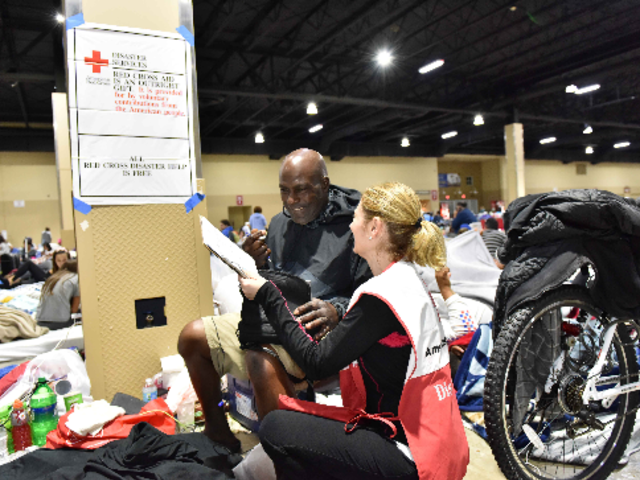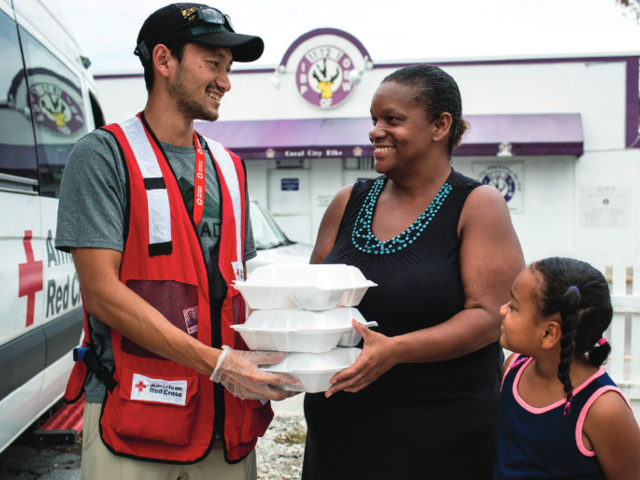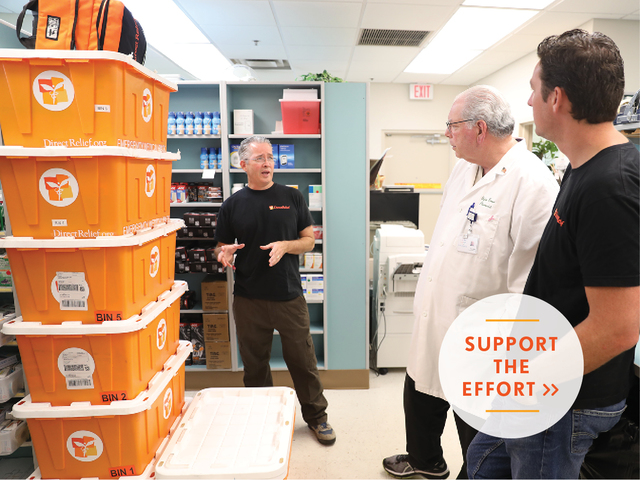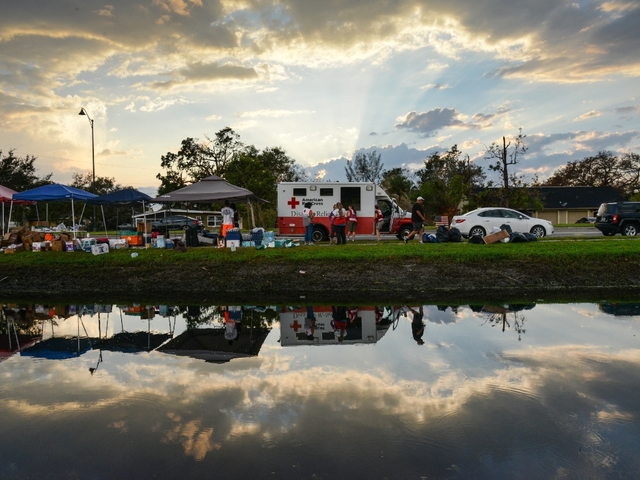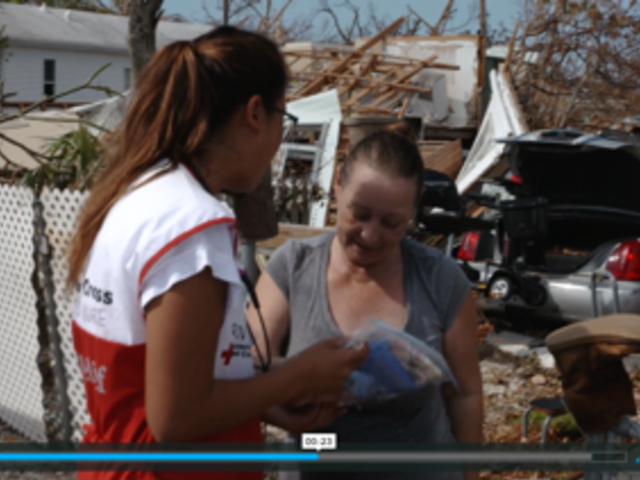As it moves over land, Hurricane Irma has weakened to a strong Tropical Storm with winds of 65 MPH; it made landfall in the Florida Keys early Sunday morning and again that afternoon along the west coast of Florida. The eye of Irma will continue to move north and west through Georgia and parts of Alabama, Arkansas and Tennessee over the next couple of days.
While many of the worst-case scenarios did not pan out, the impacts are widespread regardless. Though some communities may have been spared, some, like the coastal communities in Georgia, are witnessing worse damage than following Hurricane Matthew. As responders make their way into the affected communities today and in the days to come to assess the extent of damage, the full scope of Irma’s fury remains to be seen.
Some additional key facts:
·The storm is not over in Florida. Storm surge warnings are up for as high as 6 feet. The winds are still very strong, there is still a possibility of tornadoes and as much as 15 inches of rain could fall in some areas.
·Today, Alabama, Georgia, North Carolina and South Carolina could see heavy rain from Irma.
·Almost 6 million people have no power and utility companies are working to turn the power back on.
·Many communities are under strict curfews.
·People should not attempt to go home until officials say it is safe to do so.
Red Cross Response to Hurricane Irma
Domestic Response
The American Red Cross has a massive relief effort underway across multiple states, Puerto Rico and the U.S. Virgin Islands to help people in the path of Hurricane Irma’s fury. The Red Cross is just one key component of the huge team of partners working side by side to provide safe refuge and support to people forced from their homes by this monstrous storm. More than 1,800 Red Cross workers are responding to Irma now, with 400 more on the way.
Overnight, an estimated 208,000 people sought refuge from Hurricane Irma in as many as 680 government and Red Cross evacuation centers across 6 states, Puerto Rico and the U.S. Virgin Islands. This includes:
·In Florida, an estimated 200,000 people in 587 evacuation centers;
·In Georgia, more than 6,500 people in over 40 evacuation centers;
·In Alabama, about 40 people in 16 evacuation centers;
·In South Carolina, about 660 people in 23 evacuation centers;
·On the U.S. Virgin Islands, almost 380 people in 6 evacuation centers;
·In Puerto Rico, 154 people in 6 evacuation centers;
·In Tennessee, 131 people in 4 evacuation centers;
·In North Carolina, 33 people in 4 evacuation centers; and
To date, evacuation centers have provided more than 377,000 overnight stays to people needing a safe place to go.
In Puerto Rico, preliminary damage assessment indicates almost 500 homes received major damage with some still inaccessible. More than a million people are without power. The Red Cross is supporting shelters, conducting damage assessment where safe to do so and distributing relief supplies to residents.
Heavy damage is reported on the U.S. Virgin Islands. Many are without power, food and water. Red Cross workers are there now to help provide food, shelter and comfort to those affected. The Red Cross is also working in close collaboration with local officials and community partners to coordinate response efforts.
Disasters like Irma create more needs than any one organization can meet on their own. The Red Cross is working very closely with the entire response community – government agencies, other non-profit groups, faith-based organizations, area businesses and others – to coordinate emergency relief efforts and get help to people as quickly as possible. This is a time for communities to come together and support one another.
International Response
The International Federation of the Red Cross and Red Crescent Societies (IFRC) and Red Cross Societies are scaling up a complex, multi-country relief and recovery effort. Volunteers are on the ground across the Caribbean. Shelter is looming as a major priority, as is access to safe water and sanitation. Numerous countries are helping, including the American Red Cross and Red Cross Societies in Canada, Italy, Spain, Norway, as well as teams from the International Committee of the Red Cross (ICRC).
Initial reports from Cuba suggest that Irma had a severe impact on some parts of the country. Irma slowed down as it passed over the northern coast of Cuba, forcing evacuations in various provinces and cyclone alerts across most of the country. Severe winds and torrential rains continue and have caused structural damages in several provinces, including La Havana, with these conditions hampering assessment efforts. The Cuban Red Cross has deployed more than 7,000 volunteers throughout the country who are providing first aid, psychosocial support and helping families restore contacts with their relatives.
In Haiti, rapid damage assessments were done for four communities in the North East (Ferrier, Fort-Liberté/Malféty, Ouanaminthe et Caracol) as part of a joint evaluation done by the Haitian Red Cross, Civil Protection, Oxfam, ECHO, Unicef and Plan Haiti. More assessments are planned for the coming days in that area. Over 10,000 people spent last night in 59 temporary shelters.
The American Red Cross has committed $100,000 to support emergency relief efforts in Antigua & Barbuda and Saint Kits & Nevis focusing on cash transfer programming to assist in meeting immediate needs of those affected by Hurricane Irma. In addition, the IFRC has committed 720,000 Swiss francs of its own to help augment the response in Barbuda, St. Kitts and Nevis, the Dominican Republic and Haiti.
Shelters:
You can find shelters by calling 1-800-REDCROSS (1-800-733-2767), visiting redcross.org or by downloading the free Red Cross Emergency App. The Emergency App is available in app stores by searching for the American Red Cross or going to redcross.org/apps.
Returning Home:
Don’t return home until local authorities have deemed it safe to do so. Continue listening to local news or a NOAA Weather Radio for updated information and instructions. See list of more safety tips here to protect you and your loved ones.
